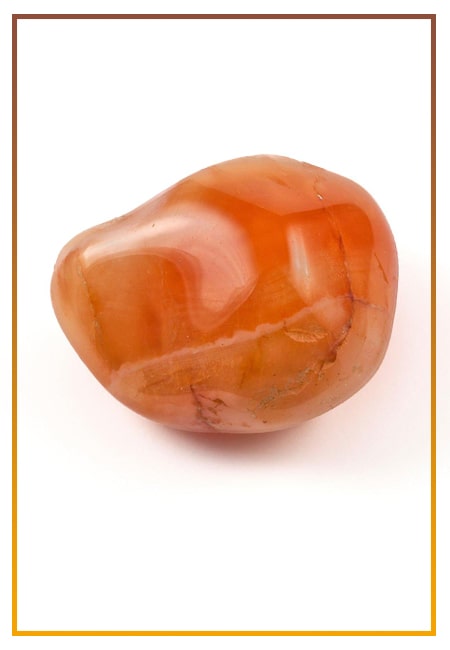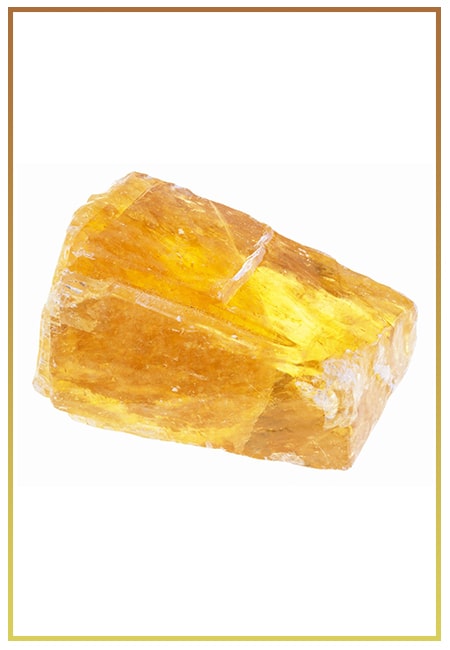- Written By Team DWS
- Festivals
- October 29, 2025
Hornbill Festival: Nagaland’s Spectacular “Festival of Festivals”
Every winter, as December dawns upon the fog-laden hills of Nagaland, something magical comes alive—the legendary Hornbill Festival. Dubbed “The Festival of Festivals,” this event is India’s grandest indigenous showcase, bringing together the vibrant spirit, colorful traditions, and unmatched diversity of all 17 officially recognized Naga tribes. For ten extraordinary days, the heart of Northeast India beats with the music, dance, cuisine, and crafts of a culture so ancient and resilient, yet ever-evolving.
638973454261346531.jpg)
The Origins: Where Legend Meets Heritage
The roots of the Hornbill Festival are woven into the fabric of Nagaland’s history. The festival owes its name and inspiration to the Great Indian Hornbill—a majestic bird revered in local folklore, symbolizing honor, unity, and pride. Traditionally, each Naga tribe—Angami, Ao, Sumi, Konyak, Lotha, and more—holds its own unique celebrations throughout the year, often aligned with agricultural cycles, harvest customs, or warrior traditions. Yet, as modernization and inter-tribal interaction accelerated, the need for a consolidated platform to preserve culture and promote unity became clear.
The government of Nagaland inaugurated the first Hornbill Festival in December 2000, envisioning a stage where all tribes could gather, foster exchange, and display their heritage to the world. Today, the festival is a beacon not just for Nagas, but for national and international visitors seeking an authentic encounter with indigenous India.
Venue: Kisama Heritage Village—The Cultural Epicenter
Set against lush, hilly terrain just 12 kilometers from Kohima, Kisama Heritage Village transforms into a festival city every December. The name Kisama merges neighboring villages Kigwema and Phesama, whose donated lands cradle this cultural haven. Kisama was built explicitly to host Hornbill, with arenas, open fields, bamboo halls, tribal morungs, and shops echoing with laughter and the pulse of celebration.
The village serves as a living museum, where guests can walk through replicas of tribal dwellings, witness traditional crafts in action, and join community meals. It’s a rare, immersive space where history lives and breathes.
Festival Activities: Culture, Sports, and Spectacle
Every sunrise at Kisama heralds another day packed with soul-stirring entertainment and hands-on experiences:
- Tribal Dances and Music: Warriors in ceremonial regalia perform centuries-old dances. Drumbeats tell tales of valor, love, and harvest. Each tribe’s unique instruments and harmonies mesmerize audiences, transporting visitors to another era.
- Indigenous Sports: Naga wrestling, tug-of-war, archery, and bamboo stilt races ignite the competitive spirit. These games are not mere displays—they are continuity of tradition and community pride.
- Traditional Attire: Attendees marvel at vibrant shawls, plumed headdresses, hornbill feathers, boar tusks, beaded jewelry, and exquisitely woven sashes—each a badge of tribal identity and artistry.
- Culinary Delights: A food lover’s paradise, the Hornbill Festival beckons with staples like smoked pork, bamboo shoot curry, sticky rice, Axone chutney, Zutho rice beer, and fiery King Chilli.
- Handicraft and Art Exhibitions: Stalls brim with handlooms, wood carvings, basketry, pottery, and beadwork. Artisans demonstrate weaving, bead-stringing, and mask-making techniques passed down through generations.
- Night Carnival: As dusk falls, Kisama transforms with glowing stalls, rock band contests, fire dances, and bustling markets filled with local wares.
- Adventure Sports: Mountain biking, Dzukou Valley treks, and bamboo craft workshops add a touch of thrill for the outdoor enthusiast.
- Cultural Exchange: Delegations from other Northeast states present their own art, music, and trade, making the festival a melting pot of cultures beyond Nagaland.
Symbolism and the Hornbill Bird
In Nagaland folk tales, the hornbill is regarded as the guardian of the forest, a symbol of fidelity, regal grace, and endurance. Tribal dancers will often sport bright hornbill feathers in their headdresses—honoring ancestral stories of birds guiding warriors, foreshadowing harvests, or embodying dignity in adversity. By naming the festival after this cherished bird, Nagaland signals its intent to protect and honor its own traditions—just as the hornbill does for the wild forests.
Tribal Participation: Weaving Unity from Diversity
Nagaland’s greatest strength lies in its diversity. Each of the state’s 17 major tribes brings its flavor to the festival, from the Ao tribe’s rhythmic dances to the fierce Konyak warrior parades; from Angami bamboo crafts to Sumi culinary secrets. Despite differences in language, art, and ritual, the Hornbill Festival fosters dialogue, reconciliation, and collaboration—a living example of “unity in diversity.”
The centrality of tribal morungs (community halls) to the festival is significant; these structures are the seat of governance, learning, and ritual in every Naga village. Festival visitors are often invited for storytelling, folklore recitations, and participatory rituals inside these morungs, creating lasting memories and friendships.
Tourism Impact: Opening Nagaland to the World
The Hornbill Festival has become Nagaland’s flagship tourism event, drawing more than 150,000 visitors in recent years—an astonishing feat for India’s remote Northeast. Local entrepreneurs, craftswomen, cooks, and musicians benefit from the influx, giving the state a vital platform to showcase its strengths, share its stories, and foster economic development.
Special attention is paid to eco-tourism, handicraft promotion, and youth entrepreneurship. International guests, from diplomats to travel writers, mingle freely with locals. In addition, the festival’s success has inspired similar “festival of festivals” models in other Himalayan regions seeking cultural preservation.
Preserving Heritage: The Festival’s Deeper Purpose
While the dazzling displays and bustling markets are tempting, the true mission of the Hornbill Festival is serious—preserving intangible heritage in an age of globalization. The event helps revive dying languages, endangered art forms, lost culinary techniques, and traditional agricultural knowledge.
Workshops for children and youth are a staple, as elders teach wood carving, tribal chants, weaving, and sustainable farming methods. Storytellers recount legends that instill pride, humility, and respect for nature—the very principles at the heart of Naga identity.
25 Years On: Silver Jubilee and Future Aspirations
Celebrating its 25th anniversary in 2025, the Hornbill Festival stands stronger than ever, adapting to new challenges and expanding its reach. Recent editions have incorporated digital showcases, hybrid events, green energy initiatives, and increased participation from neighboring states.
There is a renewed push for conservation—highlighting the need to protect the hornbill bird’s forest habitat from deforestation and poaching, thus linking cultural celebration with environmental stewardship.
Reviews and Experiences: Voices From Attendees
Ask any visitor, and you’ll hear tales of awe. Travellers praise the Hornbill Festival’s authenticity, its warm hospitality, and its unrivaled fusion of tradition and fun. Many call it India’s most photogenic festival—something no camera can fully capture.
For Nagaland’s youth, the event is an opportunity to showcase modern creative projects alongside ancestral crafts. Rock concerts, fashion shows, and contemporary dance routines blend seamlessly with traditional displays, proving that heritage can innovate without losing its soul.
Practical Information: How to Experience the Festival
If Hornbill Festival calls out to the adventurer or cultural enthusiast in your spirit, here’s what you need to know:
- Dates: December 1st to December 10th every year
- Location: Kisama Heritage Village, near Kohima
- Entry: Passes are required; tickets can be purchased at the gates. Camera permits and Inner Line Permit (ILP) are mandatory for travelers to Nagaland.
- Travel: Regular taxis ply between Kohima and Kisama. Train and flight connectivity via Dimapur.
- Stay: Homestays, guesthouses, budget hotels, luxury retreats, and camping sites are available within Kohima and surrounding villages.
- Food: Be adventurous; try sticky rice, smoked pork, bamboo shoots, local stews, millet beer, and fiery chillies.
- Festival Tips: Dress warmly, respect local customs, and bring cash for handicraft shopping. Engage with community programs and join guided tours for deeper insights.
Hornbill Music Festival: A Cultural Melting Pot
Running parallel to the main event is the Hornbill Music Festival—India’s biggest open-air music competition in Northeast India. The festival features both native Naga talent and national bands in genres spanning rock, folk, fusion, and electronica. Handshake concerts (promoting cross-border peace through music) are a crowd favorite, and late-night revelers enjoy performances under the starlit canopy.
Environmental and Sustainable Initiatives
The festival’s scope keeps expanding. Education about wildlife conservation, responsible tourism, sustainable crafts, and organic farming are now woven into the program. Integration with green energy partners, water conservation drives, and anti-plastic campaigns sets Hornbill apart as a forward-looking festival that values nature as much as culture.
Hornbill Festival in Naga Identity
For Nagas, the Hornbill Festival is more than spectacle—it’s a living testament to resilience, solidarity, and pride. The generation who remember only inter-tribal feuds now witness their children singing and dancing together. Elders see their wisdom valued, children learn to honor the land, and women step into leadership roles in crafts and culinary arts.
Moreover, the festival acts as an anchor, holding onto tribal languages, marriage rituals, harvest songs, and spiritual beliefs that might otherwise fade in the face of homogenizing media. Guests become witnesses to history in motion.
International Connections: A Window to Global Visitors
In recent years, the Hornbill Festival has grown beyond its national role, welcoming participants and delegations from Africa, Southeast Asia, and Europe. Cultural exchange events allow for storytelling marathons, art workshops, fusion cuisine tastings, and diplomatic dialogues about indigenous rights, environmental protection, and sustainable tourism.
Nagaland’s unique gastronomy, music syllables, attire, and bamboo art have found admirers and collaborators across the globe.
Popular Events and Must-See Highlights
- King Chilli Eating Competition: Only the bravest dare to try Nagaland’s infamous fiery chillies.
- Naga Wrestling: Witness the power, technique, and honor of ancient sport.
- Indigenous Fashion Parade: Marvel at hand-woven shawls, beadwork, and ceremonial headgear.
- Morung Tours: Learn about tribal governance, initiation rituals, and folklore.
- Village Walks: Experience Naga hospitality firsthand, dine with residents, and attend cooking workshops.
- Rock Band Competition: Catch emerging talent electrify the audience under open skies.

Final Thoughts: Why the Festival of Festivals Endures
The Hornbill Festival isn’t just a celebration; it is an affirmation. It asserts that ancient traditions and modern aspirations can co-exist; that unity comes not from conformity but from mutual respect; and that the beauty of Nagaland lies in its people, its forests, and its enduring stories.
As the last echoes of drums fade and the festival winds down, visitors depart with something invaluable—an expanded horizon, a heart full of music, and a rare understanding of cultural resilience.
Popular on Blogs

Black Tourmaline: Meaning, Healing Properties, Fascinating Facts, Powerful Attributes, Versatile Uses, and Beyond
September 05, 2023 / BY Team DWS
Black Tourmaline, also known as Schorl, is a highly revered crystal with incredible metaphysical properties. It derives its name from the Dutch word "turamali," meaning "stone with ..

Carnelian Stone: Meaning, Healing Properties, Power, Facts, Color, Uses and More
December 26, 2023 / BY Team DWS
Carnelian is a vibrant and captivating gemstone that holds a plethora of meanings, healing properties, and powers. Its warm and fiery energy makes it a popular choice among crystal ..

Citrine: Exploring its Meaning, Healing Properties, Fascinating Facts, Powers, Versatile Uses, and Much More
November 18, 2023 / BY Team DWS
Citrine, with its warm golden hues, has captured the attention and imagination of people for centuries. This beautiful gemstone, commonly associated with wealth and prosperity, hol ..

Black Onyx: Unveiling the Meaning, Healing Properties, Fascinating Facts, Powerful Attributes, Versatile Uses, and Beyond
July 25, 2023 / BY Team DWS
Black Onyx, a striking gemstone admired for its deep black hue and elegant appearance, has captivated people for centuries. In this comprehensive guide, we will delve into the mean ..

Unveiling the Mysteries of Turquoise Stone: Exploring its Meaning, Healing Properties, Power, Facts, Color, Uses, and More
December 05, 2023 / BY Team DWS
Turquoise, with its captivating blue-green hue, has been adorning jewelry and artifacts for centuries. This striking stone has a rich history, rich symbolism, and a plethora of int ..

The History Behind The Popularity of Red Agate
December 23, 2022 / BY Team DWS
An Agate is a type of magma rock that takes many years till it is washed out naturally into the water. And that is the reason this stone has elements of water. This beautiful stone ..

Bloodstone: Unveiling the Meaning, Healing Properties, Facts, Powers, Uses, and More
August 21, 2023 / BY Team DWS
Bloodstone, with its captivating deep green color with specks of red, is a mesmerizing gemstone that has fascinated civilizations for centuries. It possesses unique healing propert ..

Plan a Perfect Valentine's Week with Our Valentine Week List 2025
January 22, 2024 / BY Team DWS
Valentine's Day is undoubtedly the most romantic day of the year, but we believe that one day is just not enough to express your love and make your partner feel special. That's why ..


